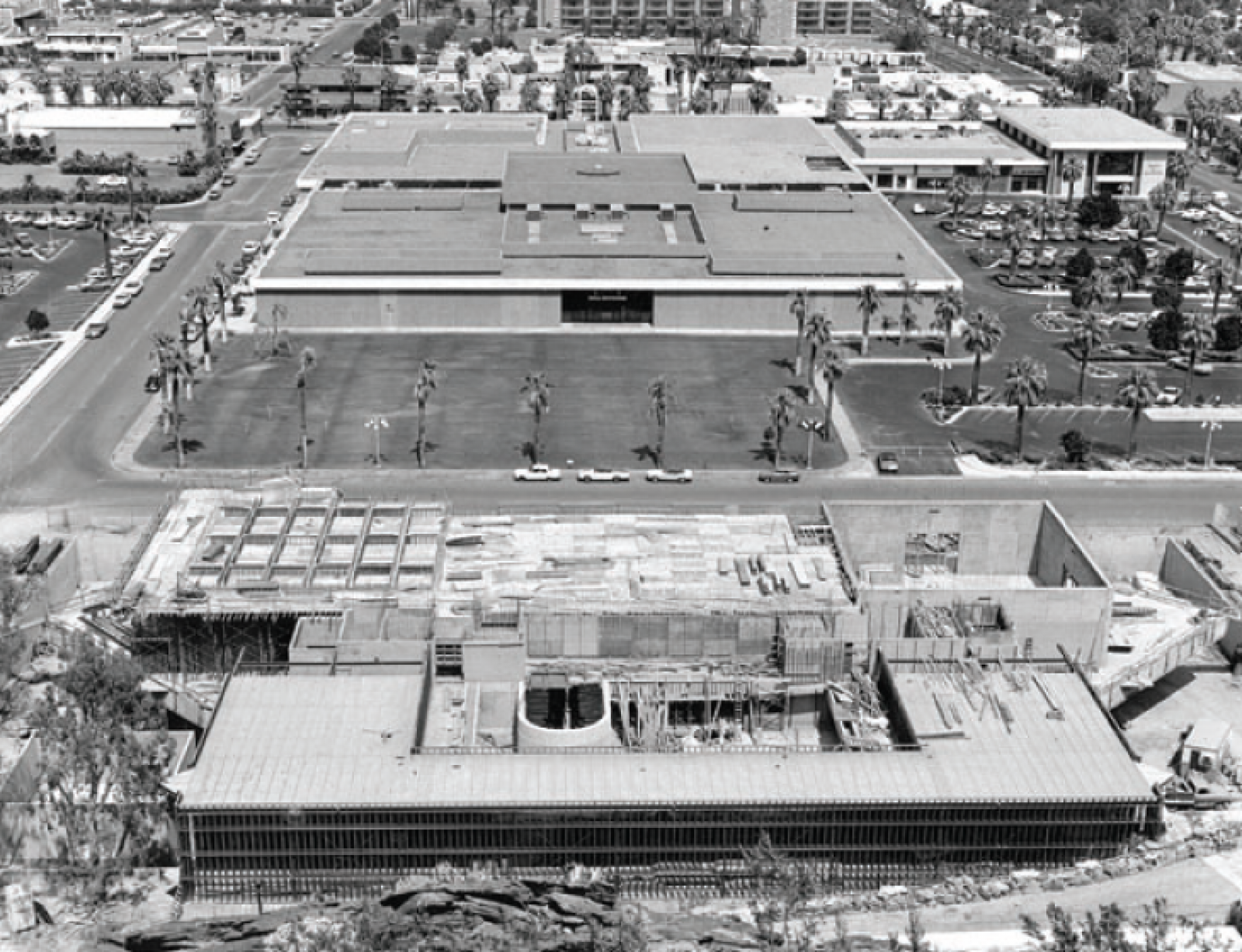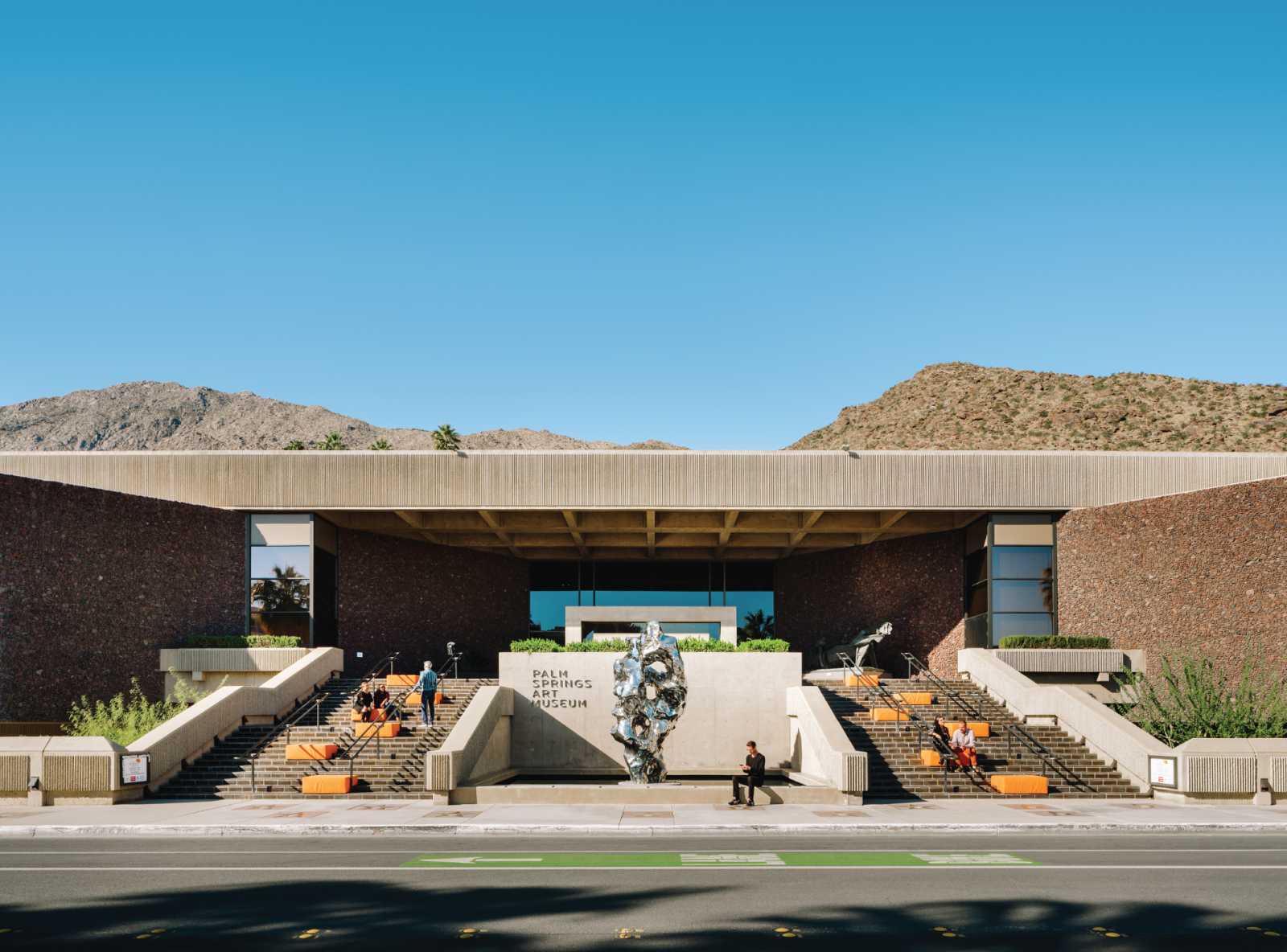Palm Springs Art Museum
The museum was originally founded as the Palm Springs Desert Museum and located at 135 E. Tahquitz-McCallum Way in its small downtown building erected in 1958, built by the two local architecture firms, Williams, Williams, and Williams and Clark, Frey and Chambers. By the early 1970s, Palm Springs had grown sufficiently in size and stature to support a much larger cultural institution, and the board undertook a new endeavor, planning for the current building, designed by E. Stewart Williams, and considered to be his most significant civic monument. The Palm Springs Desert Museum opened in 1976 and later became the Palm Springs Art Museum in 2005.
Williams constructed the museum out of concrete mixed with Warmtone cement and several aggregates. Long expanses of concrete panels were hammered to expose the aggregate. For cladding, Williams sought a lightweight material with colors sympathetic to the adjacent mountainside.
By the early 1980s, more space was needed to display the museum’s collection, so administrative functions were relocated to a new, separate structure just north of the original building. Named the Marks Administration Building, it was designed by Williams and completed in 1981.
Then, in 1993, a generous donation from interior designer Steven Chase helped fund a 15,000- square-foot addition to the museum to house new galleries, a lecture hall, art storage, and other spaces. Williams came out of retirement to design the addition, which opened in 1996.
Aerial view of museum construction site looking east, ca. 1973-1975. Photographer unknown.
Palm Springs Art Museum, designed by E. Stewart Williams, 1976. Photo by Lance Gerber.
Architecture and Design Center, Edwards Harris Pavilion
E. Stewart Williams designed three of the most distinctive banks in Palm Springs between 1956 and 1961, all within several blocks of each other. This included the Santa Fe Federal Savings and Loan (1960), which is now the museum’s Architecture and Design Center, Edwards Harris Pavilion.
Living and working in Palm Springs, Stewart understood firsthand the needs of businesses operating in this expanding desert town. This includes floor-to-ceiling glass windows to reveal the west-facing mountains, and perforated sliding anodized aluminum panels on the facade to create shade—as well as a drive-up window and a visible vault—all of which are permanent features.
In 2014, Santa Fe Federal Savings and Loan was transformed into Palm Springs Art Museum’s Architecture and Design Center, Edwards Harris Pavilion.
Palm Springs Art Museum, Architecture and Design Center, Edwards Harris Pavilion, originally designed by E. Stewart Williams, 1960 and restored by Marmol Radziner in 2014. Photo by Marco Carocari.



